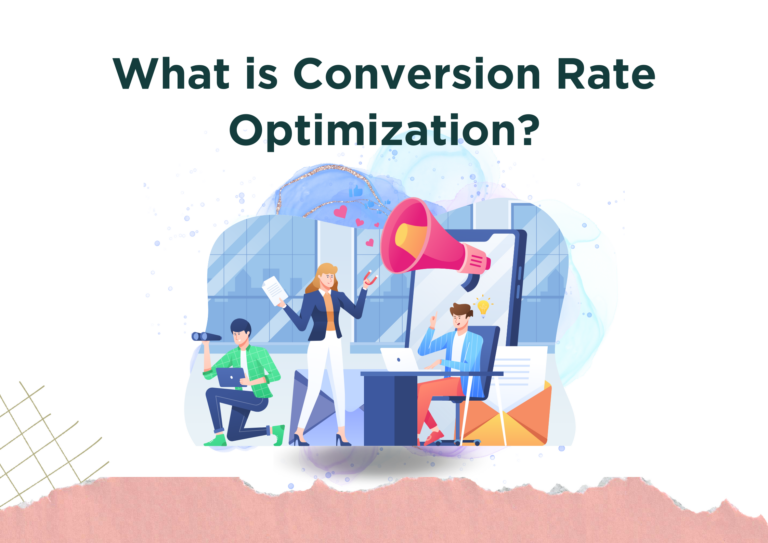Understanding Conversion Rate Optimization (CRO)
Optimizing a website or landing page to increase the percentage of visitors who take a desired action is known as conversion rate optimization (CRO). This could be any goal that is in line with the company’s goals, such as buying something, subscribing to a newsletter, completing a form, etc.
To put it another way, conversion rate optimization (CRO) is the process of converting interested website visitors into beneficial clients or leads to maximize the return on investment (ROI) from your digital marketing initiatives.
The Importance of Conversion Rate Optimization
Why is CRO important for companies operating in the digital space? Here’s why:
- Increased return on investment (ROI): By improving conversion rates, you are essentially maximizing the value of the traffic you already have, which raises the ROI on your marketing investments.
- Better User Experience: Conversion Rate Optimization (CRO) entails analyzing user behavior and preferences to create a website or landing page that is easier to use and more intuitive.
- Competitive Advantage: By continuously providing a smooth and fulfilling user experience, companies that promote CRO in a crowded online marketplace acquire a competitive edge.
- Data-Driven Decision Making: Customer relationship management (CRM) is based on data analysis and testing. These methods offer priceless insights into customer preferences and behavior that can guide strategic decision-making in a number of business domains.
Key Components of Conversion Rate Optimization
Understanding the essential elements involved is crucial to optimizing conversion rates effectively:
- Analysis and Research: In order to understand user behavior, preferences, and pain points, this entails analyzing user data, performing market research, and using tools like Google Analytics with data.
- Establishing Clearly Defined Goals: It is critical to establish your conversion goals. Whether your goal is to increase sales, generate leads, or increase newsletter sign-ups, having well-defined, quantifiable goals will help streamline your optimization efforts.
- Producing Captivating Content: Content is essential to CRO. Every component, from compelling call-to-action buttons to captivating copy for landing pages, should be created with the intention of captivating visitors and motivating them to take action.
- Improving User Experience (UX): Conversion optimization depends critically on a smooth and simple user interface. This include enhancing the usability of the website overall, as well as the navigation, page load times, and mobile responsiveness.
- A/B Testing and Experimentation: A/B testing compares two iterations of a page or element to see which converts more effectively. You can gradually increase conversion rates by running tests and evaluating the outcomes.
- Conversion Funnel Optimization: To maximize conversions, it is critical to comprehend the conversion funnel’s stages—awareness, interest, desire, and action—and to optimize each one.
- Constant Iteration and Monitoring: CRO is a continuous process. To sustain and improve conversion rates, track important metrics constantly, pinpoint areas for development, and make iterations based on data-driven insights.
Boosting Conversion Rates with SEO
It is essential to use SEO optimization techniques to make sure your CRO efforts are successful. You can maximize the impact of your CRO and SEO by following these steps:
- Keyword Research: Conduct keyword research to find pertinent terms for your industry and target market. After you have identified high-value keywords with a respectable search volume, optimize your content using tools such as Google Keyword Planner.
- Produce Relevant, High-Quality Content: Write content that speaks to your target audience and organically includes the targeted keywords. Pay attention to meeting the needs and resolving the concerns of your audience while also adding value.
- Optimized Meta Tags and Descriptions: Create attention-grabbing meta titles and descriptions that push visitors to click through to your website while also incorporating pertinent keywords. Search engine results page (SERP) click-through rates (CTRs) may increase as a result.
- Mobile Optimization: Since more people are using mobile devices to access the internet, it is critical for both SEO and CRO to make sure your website is optimized for mobile. The key components of a successful mobile user experience are responsive design, quick load times, and easy navigation.
- Optimization of Page Speed: User experience and conversion rates are directly impacted by page speed, which is a critical parameter for search engines to determine rankings. Reduce the size of your images, use browser caching, and apply compression to improve the loading times of your website.
- Link Building: To increase your website’s authority and visibility in search engine results, develop backlinks from respectable websites in your industry. In addition to improving SEO, high-quality backlinks generate referral traffic, which may lead to a rise in conversions.
Conversion Rate Optimization (CRO) is a comprehensive strategy that aims to increase the efficacy of your online presence and produce measurable outcomes for your company. Through comprehension of CRO principles, integration of SEO optimization tactics, and ongoing iteration grounded in data-driven insights, you can unleash the complete potential of your website and attain enduring expansion in the current competitive milieu. Implement these strategies immediately to convert website visitors into loyal customers and expand your business to new heights.




